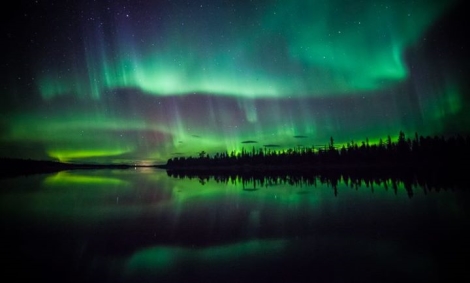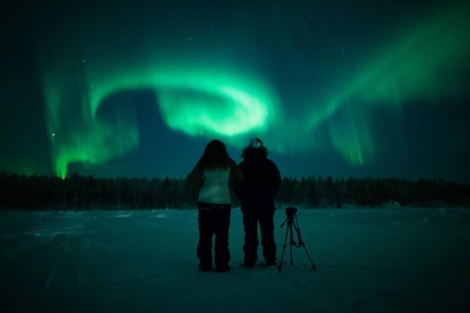We know that as well as seeing the Northern Lights in all their dazzling glory, a goal for most of our clients is also to capture their remarkable beauty on camera. Over the years we have seen such truly beautiful Aurora photography that it is easy to see why. Whilst a picture or video can never quite be the same as a live show, an image which shows the spectacular colours or a time-lapse video that shows the shimmering, dancing and swirling movement of the lights is something to be treasured forever.
As the local guides and suppliers in Lapland become aware of this desire to view the Northern Lights on film, more of our trips are moving towards helping our guests achieve this aim.
We offer a popular photography evening on our Abisko trips, organised by renowned photographer Chad Blakley and operated by one of his expert guides. This is the perfect excursion for those who may have the enthusiasm to capture the Aurora but may not have the correct equipment, as you will be issued with a camera and tripod. All you need is an SD card so you can take your photos home with you!
With our trips to Menesjärvi and Nellim, the guides are growing ever more experienced in photography and will be happy to offer advice and guidance on how to get the ideal photo should the conditions be in your favour.

As standard digital cameras grow increasingly sophisticated, those with settings that can be changed manually can often help you capture the Northern Lights quite effectively.
However, to get the best chance of taking that perfect photo, you will need a D-SLR camera with a wide-angle lens (10-24mm) and fast aperture 1.4-3.5. It is worth testing the settings to see what suits you best.
To take the photo you will need to set your camera to a long exposure time (around 15 to 20 seconds per picture) and we would advise using a sturdy tripod to ensure the image is as stable as possible.
Over the years we have been given many bits of advice on photographing the Northern Lights that we would like to share.
Firstly make sure you take spare batteries and memory cards. With the cold temperatures, batteries can run down quicker than expected so keep the spare ones in an internal pocket close to your body warmth.
Learn the settings (zoom, aperture, exposure for example) on your camera beforehand so that you know what you are doing when you’re there and are able to capture the moment. You also don’t want to have to spend too long adjusting settings at sub-zero temperatures.
It might help for you to get a remote or cable shutter as it can be hard to press the buttons with gloves on the camera itself without causing the camera to shake. Remember as you are far from any light pollution it will be dark so head torches can be useful.
Experienced photographers will recommend getting a head torch with a less intrusive red light as it will not ‘dazzle’ others as much as a white light and negatively affect your night vision.
We fully understand that you will want to capture the beauty of the Northern Lights on film, but don’t forget to look up from your camera and enjoy the live show too!
